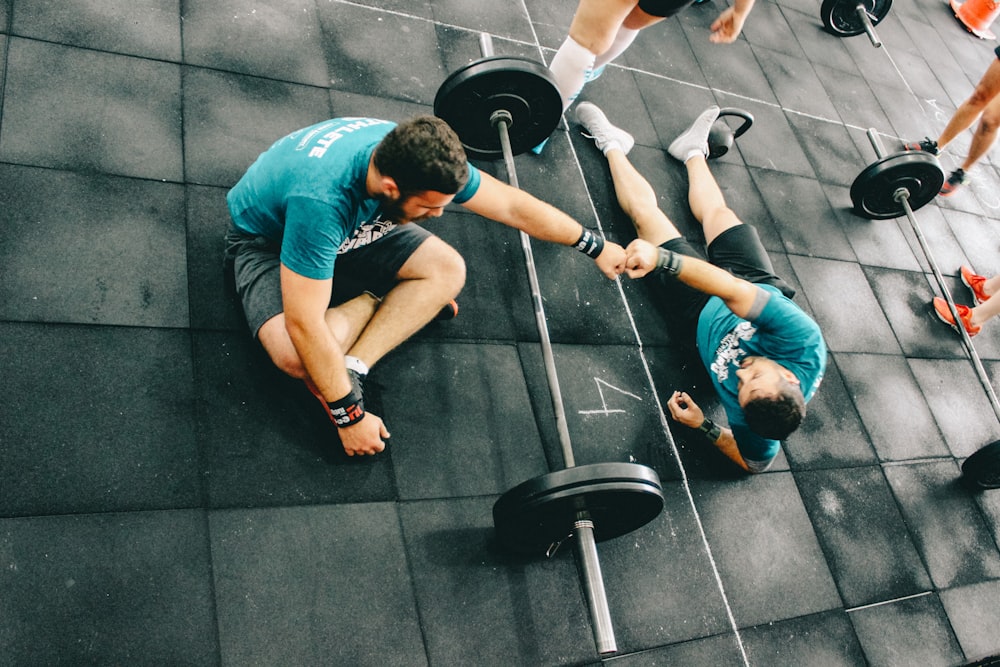
Your cardiovascular endurance is the performance level at which your heart, lungs, and muscles work together when you’re exercising for an extended period of time. Your cardiovascular endurance shows how efficiently your cardiovascular system functions, and is an indicator of how physically fit you are. It’s also an indicator of how healthy you are.
It’s useful to know where you’re at in terms of your cardiovascular endurance capacity, because it can either be a sign of good health or a sign that you need to improve your physical fitness.
Improving and increasing your cardiovascular endurance will have a positive effect on your overall health. Your lungs and heart are able to better pump oxygen. This allows you to exercise for longer periods of time without getting tired.
When you partake in strenuous physical activity, your muscles need more oxygen than when you’re resting. This means your cardiovascular system works harder than normal to pump oxygenated blood to your working muscles. If you have poor cardiovascular endurance, you won’t get enough oxygen to your muscles, and you’ll start to experience fatigue.
High VS Low Cardiovascular Endurance
People with low endurance might need to take lots of breaks on a challenging hike, or they might not be able to run for extended periods of time. Most people can increase their cardiovascular endurance by exercising regularly, and especially by doing cardio.
Endurance can be affected by an individual muscle, a muscle group, or the total body. Total body endurance typically refers to cardiopulmonary endurance, reflecting the ability of the heart to deliver a steady supply of oxygen to working muscle or muscles. If you’re not eating a healthy diet, or you’re eating irregularly, you may find hidden energy by modifying or increasing your nutritional intake. Your body is like a sports car: it runs better and faster on high grade fuel. This is where nutritional foods come into play.
Medical conditions and overall health also play a part in one’s cardiovascular endurance. The human body is amazing. An infinite number of things can go wrong with it, yet it keeps on trucking even when compromised. That means sometimes you have to really look under the hood to find out what’s wrong, if you can’t figure out why you have low endurance.
Improving Your Endurance
Perhaps you have low endurance due to weak lungs, respiratory problems, or some sort of injury. However, If it turns out to be only a physical fitness issue, and your doctor thinks you can improve your cardiovascular endurance just by getting more physically fit, it’s all about training. You can train your body to have higher endurance. Below are 5 Ways to improve your cardiovascular endurance:
1. Endurance Training

With consistent endurance training, the body becomes better able to produce ATP through aerobic metabolism. The cardiovascular system and aerobic energy systems become more efficient at delivering oxygen to the working muscles and converting carbohydrates and fat into energy.
There are many ways to train for improved aerobic endurance. The duration, frequency, and intensity of each type of training vary. Focusing on slightly different energy systems and skills will result in a well-rounded program that promotes a variety of physical adaptations.
Running or cycling, for example, increase heart and lung capacity, while resistance exercises build physical strength. Combining different types of workouts in your training program can help you to maximize your endurance.
Some people use apps to help them go from only being able to run for one minute without needing a walking break, to being able to run for 30 minutes. Endurance running can be learned and practiced, and is a great method of endurance training.
2. Push Yourself Harder
Getting on the treadmill at the gym and reading a magazine while you walk at a pace of 3.5 miles per hour isn’t doing you any harm, but it’s also not getting you the best possible results. That’s better than nothing, but you’re not pushing yourself if you’re able to read a magazine or even maintain a phone conversation while working out.
To really see gains in your fitness, you have to challenge your cardiovascular system. This causes your heart and lungs to adapt to the pressure and grow stronger.
Put the magazine down, and put on some headphones. Play your favorite energizing music and push the pace up a few notches. Push yourself harder. Your workouts should get your heart rate up and make you sweat. During a moderate-intensity workout, you can still carry on a conversation, but during a vigorous workout, you might only be able to link a few words without needing to take a breath – and you definitely won’t be able to read a magazine.
If you were walking at a pace of 3.5 miles per hour before, try pushing it up to 3.8 or 4 miles per hour. Or, start jogging. If you were jogging before, pick up the pace to a run. You don’t have to maintain this pace throughout the workout to start, but adding in periods of more intense exercise will have greater benefits for your cardiovascular fitness.
Building endurance is a challenge, so when you’re training, it should definitely feel challenging. You should be out of breath and sweating.
3. Try Circuit Training

Not only can traditional cardio exercises be used to improve endurance; your resistance training routine can also be structured in such a way that it tests your muscular and cardiovascular strength.
Unlike traditional weight training in which you do a set, rest, then do another set, circuit training has you moving from one exercise to the next with no rest between sets. For example, you would do a set of push ups, followed by a set of squats, then mountain climbers, rows, thrusters and walking lunges. After a brief rest, you repeat the round one to four more times.
Because resting periods are limited in circuit training, this tests and improves your endurance.
You can do each exercise for a set number of reps (8 to 12) or you can set a timer and do each exercise for 30 to 60 seconds. Perform as many repetitions of each exercise as you can in that time frame.
If you really want to test your heart and lungs, jump on the treadmill or stair climber for 20 minutes after your circuit workout.
4. Keep Your Body Guessing
Running might be your usual activity of choice, but you’re not doing your cardiovascular system or the rest of your body any favours by only running. Doing the same activity all the time can lead to stagnancy in your fitness routine, and it can also lead to repetitive stress injuries.
Keep your body guessing and switch up your workouts sometimes. Swim or kayak instead of going running, or try cycling. That doesn’t mean you can’t run. It just means you should do other activities, too. Instead of running five days per week, run two days and then row or take an aerobics class on the other three days. This pushes your body to adapt to novel challenges.
5. Set Some Goals
Maybe you want to be able to run a mile without stopping, or run a marathon. Perhaps training for (and completing) a marathon would prove your cardiovascular endurance. In order to reach your goals, you have to set mini-goals. If you have a particular race or other competition in mind, find a training plan or a group of training partners to keep you on track.
Otherwise, think about a manageable four-week program you can stick with, roughly mapping out your activities or running routes for the month. Keep track of how well you stick to the plan and how you feel during and after each workout. At the end of the month, assess how far you’ve come and revise your goals for the next month, adding in more workouts or aiming to increase your intensity.
Is Having High Endurance Genetic?

Some people naturally seem to have higher endurance than others, and yes, part of this is genetic. Scientists found out that physical fitness, like obesity, has genetic underpinnings, making it inherently much easier for some to get fit than others. And the facets of fitness are independent, so those who inherit an ability to gain muscle strength may not be able to grow large muscles and those who can easily increase their ability to do aerobic exercise may be thwarted on the weight room floor. Of course, none of this means that anyone should give up on working out.
Exercise physiologist Dan Zeman, MS, who has worked with NBA and NFL athletes (as well as three-time Tour de France champion Greg LeMond) says, “Everyone should be involved in a cardiovascular program.” Zeman clarifies, “It’s just that not everyone will have the same degree or percentage of improvement.”
So, the question you have to ask yourself is this: What is your objective when you exercise? “If it’s to be active and improve your health, then find an activity that you can tolerate and enjoy, and do that,” says Zeman. If your goal is to get into peak shape for an event, that’s great, too. Recognize that you might not be able to maintain that same fitness level all year-round, though. “The guy who has the world record in the 10K can’t go out and run that time every day for a year,” Zeman notes. “He has to build up to that, peak for that, and then he takes an off-season.”
Just as everyone’s body is different, everyone’s body has different capabilities, too. It could be in your genes to have high endurance and low strength. Others might be genetically more likely to have lower endurance and higher strength. By finding out your genetic predispositions through a DNA test, you can find out if you’ll need to work harder to build endurance, due genetically having low endurance. You can even find out the best training program according to your DNA, and improve your fitness level from there.






This Post Has 5 Comments
Comments are closed.